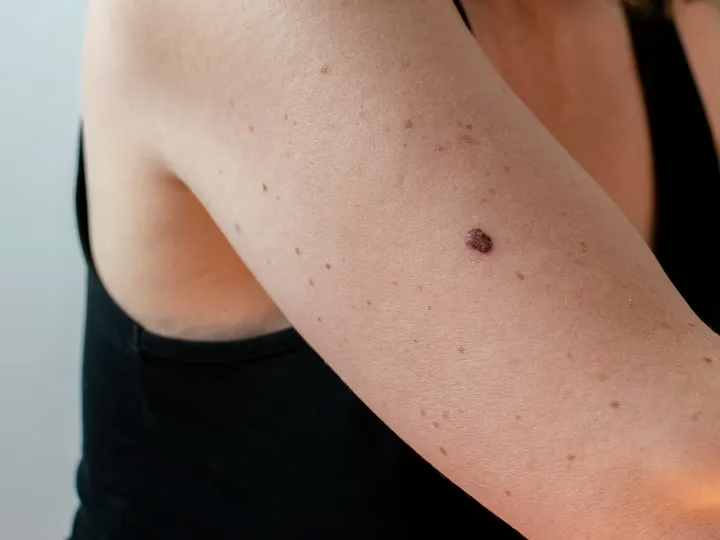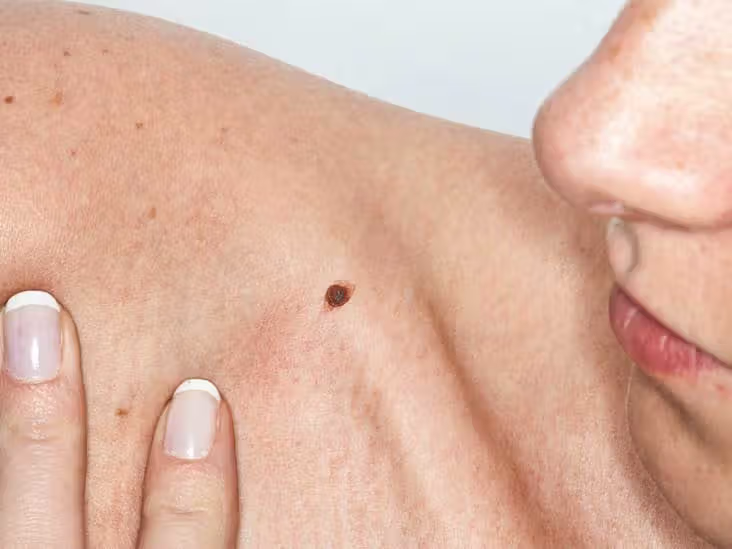
Table of Contents
ToggleEarly Detection of Skin Cancer Types on Face
Early identification of Skin Cancer Types on Face is vital for protecting your skin and overall health. Due to the fact that your face is more exposed to the sun than many other regions, it is susceptible to revealing symptoms of skin cancers, including malignant melanoma, on its exterior earlier than the rest of your body.
Thus, noticing little variations can help you make an appointment with a fitness specialist while the opportunities of treatment being more successful or less extensive are more; every person disregards those little patches as non-worries inside the starting, yet understanding what signs and symptoms to spot can significantly affect the final result.
Key Takeaways
- The face is an excessive-risk region due to frequent solar exposure.
- Changes in length, shade, or shape should no longer be overlooked.
- Some pores and skin cancers grow slowly, while others progress quickly.
- Early evaluation is vital for correct diagnosis.
- Daily pores and skin safety allows for reducing long-term period chance.
Skin Cancer Types on Face: Warning Signs to Watch For
A helpful way to identify Skin Cancer Types on Face is by using the ABCDE guide: Asymmetry, Border, Color, Diameter, and Evolution. When thinking about dangerous types of skin cancer on the face, melanoma is commonly linked to these warning signs, but other cancers can also show changes.
A scaly patch that returns, a new bump that bleeds, or a sore that doesn’t heal ought to be evaluated. If something appears new or uncommon, it’s far better to have it checked. Skin cancers do not usually hurt, so pain isn’t a reliable signal.
Skin Cancer Types on Face: The Importance of Noticing Small Changes
Small changes in Skin Cancer Types on Face are easy to miss, especially near the hairline, nose, or jawline. However, some aggressive types of skin cancer on the face can spread beneath the surface before they become obvious. This is why dermatologists recommend regular skin exams.
Even one professional screening each year can help detect problems early. Family history can also increase risk. Frequent tanning or outdoor work may add to this risk as well.

Skin Cancer Types on Face: Professional Skin Care You Can Trust
Wall Dermatology provides personalized evaluation, guidance, and treatment for Skin Cancer Types on Face. Our goal is to empower you to make informed decisions regarding your care, and regularly visiting us helps us monitor changes over time and offer early reassurance when something appears different. If you have noticed any unusual spots or just want a professional check-up, contact us now!
Conclusion
The face is highly prone to Skin Cancer Types on Face because of daily sun exposure. Recognizing early signs, scheduling recurring dermatology opinions, and practicing day-by-day sun safety are key steps in staying safe. Paying attention to small changes helps lengthy-term pores and skin fitness and peace of mind.
Skin Cancer Types on Face: Taking Action: When to See a Dermatologist
If you note a brand new or changing mole that itches or hurts, or tough or scaly patches that might not heal, reddened pores and skin, swelling, and oozing areas wanting similar examination, in addition to spots that bleed without difficulty or don’t heal, make an appointment at once with a company to be tested similarly. Bleeding spots could suggest an underlying scientific situation.
If you’re in doubt, it’s better to get it checked out. Lots of patients who come to Wall Dermatology are bothered about a minute skin problem leave the office feeling quite happy now that they’ve clear answer from our experts.
Conclusion
Itching or pain on your skin may not necessarily signal cancer, but should never be disregarded. Everyone’s skin responds differently, so making assumptions can be dangerous; for this reason, it is best to seek professional advice when inquiring if a skin cancer itch or investigating strange spots on your body is suspected.
Wall Dermatology‘s primary goal is to detect, prevent, and treat all forms of skin cancer. Regular screenings, sun protection measures, and expert guidance all play an integral part in keeping our clients’ skin healthy and safe.

📞 Schedule Your Skin Check with Wall Dermatology
Your skin deserves expert care. Whether you have an itchy spot, mole or patch that won’t heal, Wall Dermatology is here to help. Our experienced team can identify and treat any skin problem with care and precision.
Contact us today! Visit https://wallderm.com/ to book your appointment or learn more about our services.
Frequently Asked Questions
- What is the maximum risky sort of skin cancer on the face?
Melanoma is taken into consideration the most risky due to the fact that it can spread quickly if not treated early.
- Can skin cancer on the face be painless?
Yes. Many skin cancers do not purpose pain within the early stages.
- How often must I take a look at my pores and skin?
Check monthly at home and timetable a yearly dermatology exam.
- Can sunscreen simply reduce danger?
Yes. Daily sunscreen use allows for lessening UV damage that may cause pores and skin cancer.
- What happens at some point during a dermatologist’s skin check?
A dermatologist examines your skin, discusses any concerns, and can perform a biopsy if desired.
